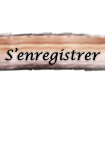Corallus CaninusClass : Squamates
Subclass : Ophidian
Common name : Emerald Tree Boa (Linneaus 1758)
Distribution : Amazonian Basin of South America
Lifestyle: nocturnal, tree-dwelling
Legal status: CITES, Annex 2 B
BiotopeThis snake lives in some areas of Guyana, Surinam, Amazonian Basin. (The Bresilian Species seems stourter and of a bluer shade) This is a tree-dwelling snake living in the canopea, never coming onto the floor: this species is associated with primary and secondary forest. It is often found overhanging from trees and near river courses.
Physical caracteristics::
This snake is about 2 meters long when adult, it is bright green to emerald green with a white dorsal lining. The underside is yellow or white, and its numerous vomeronasal organs allow it tocapture its preys just like the Green Python (Morelia viridis) ; Their diffence lies mostly in their different geographical distribution, their reproduction mode and the number of scales situated between the nostrils, usually between 4 and 6 for the Emerald Boa.
There are various blue shades in the Amazonian Basin that we might come to distinguish as different species or subspecies, the Amazonian individual being though much bigger.
Biology:Adult size: about 2 meters, females are bigger than males.
Sexually mature at about 3 years of age.
Reproduction: from 2-3 years of age for males and females.
Pregnancy: about 6 months… the Emarald Boa is ovoviparous and the hatchings are able to cope by themselves right after they are born, measuring about 30 centimeters, and are usually reddish brown.
Hatching: from 1 to 15
Shedding: once a month for the young; an average 6 times a year for adults
Life Span: 15 years
This snake lives in a habitat offering very little temperature variations, from 32 to 35°C during daytime and no less than 24°C during the night.
Behaviour:This animal is shy, tree-dwelling, never coming down onto the floor, and living in a very quiet surrounding.
If surprised, it can be extremely aggressive and must be handled with a lot of caution; unpredictable, it tends to bite directly to the face and its very long fangs can induce very serious unjuries.
In its natural habitat, it can remains for weeks on the same spot, overhanging from its branch. This snake is also called ‘Ornament snake’ as the more it is handled, the shorter its life expectancy. It should thus not be disturbed unnecessarily.
Feeding:
This snake should be fed every 2 or 3 weeks, as it has very little activity. In its natural habitat, it eats bats, birds (parrots) and little monkeys.
If this snake regurgitates more than 3 times, there is a major deathly risk.
In captivity, it will be necessary to get it used to rodents.
Terrariums and husbandry :Humidity : 80-90%
Lighting : room lighting, 10-12 hours
Water dish changed every 2 days, or more if there are feces in it.
Diet : dead little-sized rodents (frozen) ou freshly killed, immature rodents.
Subtrate: paper or damp sphagnum moss mixed with fir bark chips.
An Exoterra 45X45X65 (centimeters) terrarium for tree-dwelling species, with a frontal opening system, performing aeration, wired top as well as a locking system for the doors.
The groung heating is assumed by a 8W heating pad and completed with a 75W halogen lamp also used for the lighting function.
Temperatures vary from 32°C at the basking spot to 25°C at the cooling spot.
Hygrometry must not get under 50%, and is supported by 2 daily mistings; morning and night.
My own male
Corallus comes from Houten, Netherlands, and was legally bought to a German breeder. It is wild caught, but traced by a bill and a CITES number. It is in CITES Annex 2 B, and will soon be microchipped.
I feed it every 10 days, ensure an ideal temperature of 30°C on the basking spot and 25 an the cool spot with a nocturnal fall of 5°C induced by the halogen lamp stop.
Hygrometry is ensured by a morning and an evening misting.








